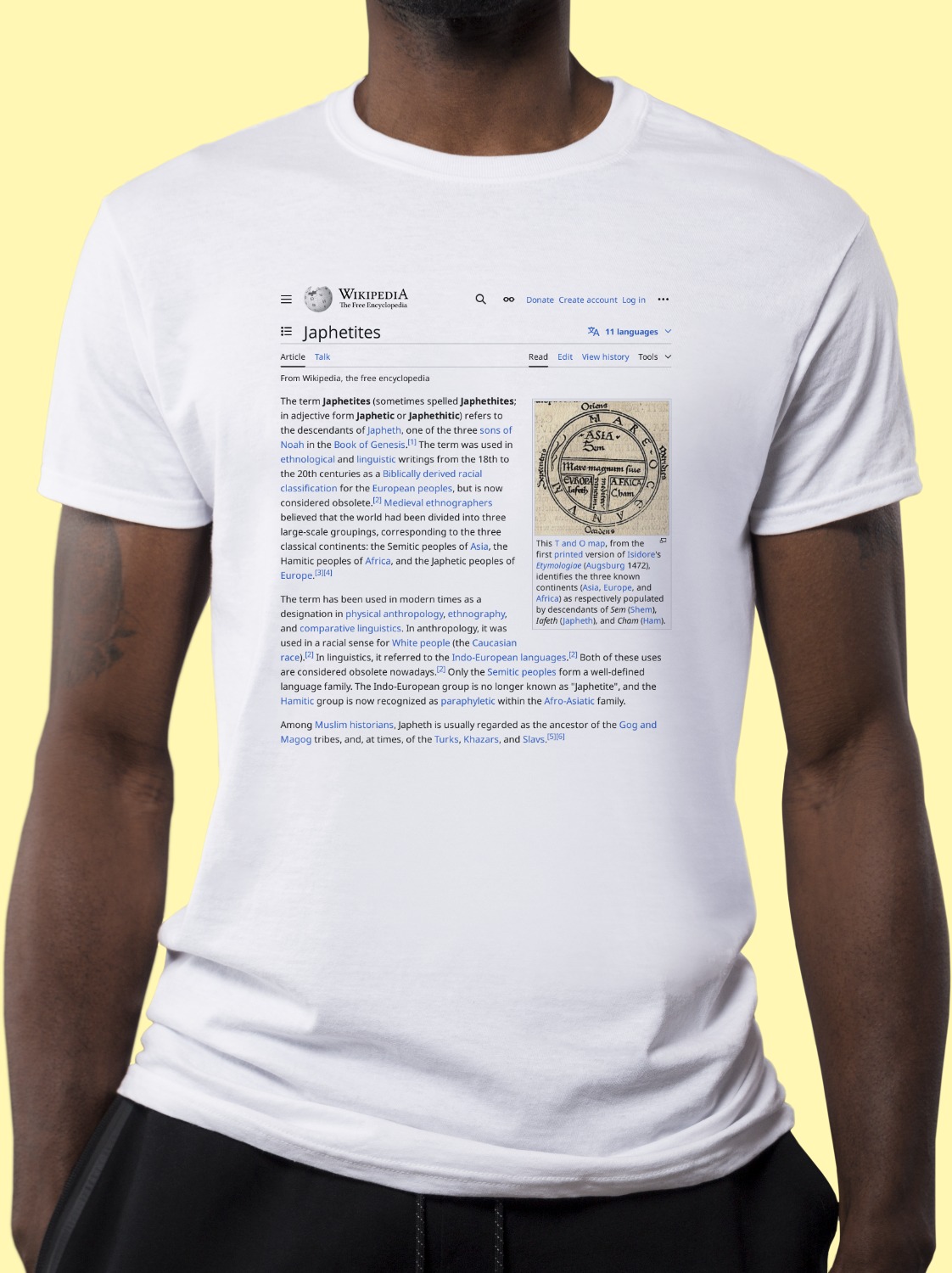
Japhetites Shirt
A classic cotton tee emblazoned with the Wikipedia article on Japhetites ↗.
cotton tee emblazoned with the Wikipedia article on Japhetites ↗.- Preshrunk jersey knit
- Seamless double-needle 2.2 cm collar
- Taped neck and shoulders
- Tear away label
- Double-needle sleeve and bottom hems
- Quarter-turned to eliminate centre crease
The term Japhetites (sometimes spelled Japhethites; in adjective form Japhetic or Japhethitic) refers to the descendants of Japheth, one of the three sons of Noah in the Book of Genesis. The term was used in ethnological and linguistic writings from the 18th to the 20th centuries as a Biblically derived racial classification for the European peoples, but is now considered obsolete. Medieval ethnographers believed that the world had been divided into three large-scale groupings, corresponding to the three classical continents: the Semitic peoples of Asia, the Hamitic peoples of Africa, and the Japhetic peoples of Europe.
The term has been used in modern times as a designation in physical anthropology, ethnography, and comparative linguistics. In anthropology, it was used in a racial sense for White people (the Caucasian race). In linguistics, it referred to the Indo-European languages. Both of these uses are considered obsolete nowadays. Only the Semitic peoples form a well-defined language family. The Indo-European group is no longer known as "Japhetite", and the Hamitic group is now recognized as paraphyletic within the Afro-Asiatic family.
Among Muslim historians, Japheth is usually regarded as the ancestor of the Gog and Magog tribes, and, at times, of the Turks, Khazars, and Slavs.
About Wikishirt
Wikishirt is a retail experiment that lets you buy a shirt with any Wikipedia Article printed on it. There are over 5 million Wikipedia articles, so we have over 5 million shirts.Check out our homepage for random featured shirts and more!